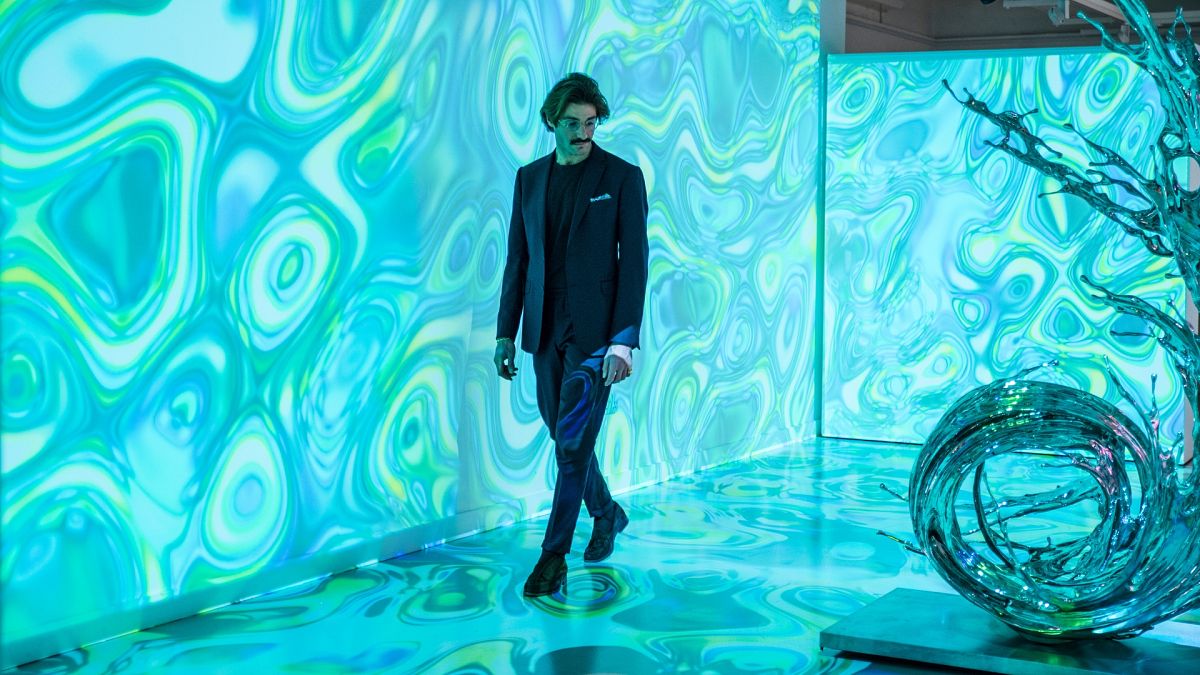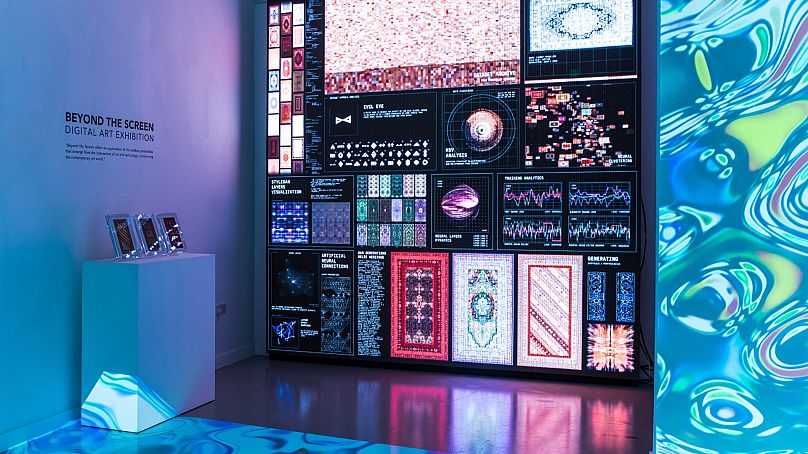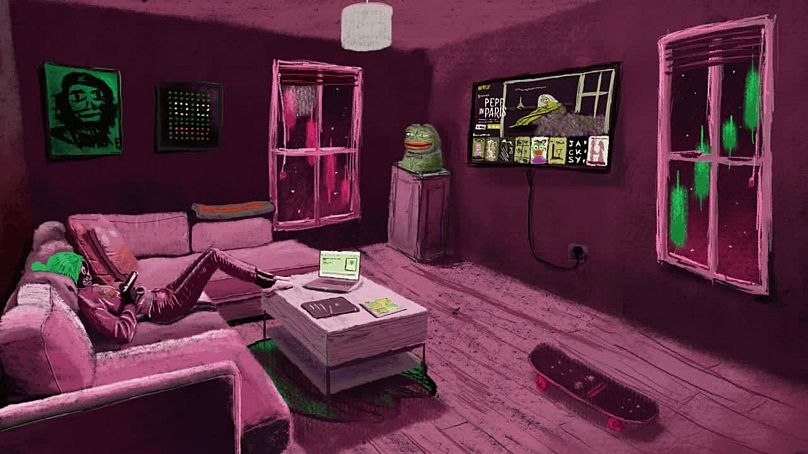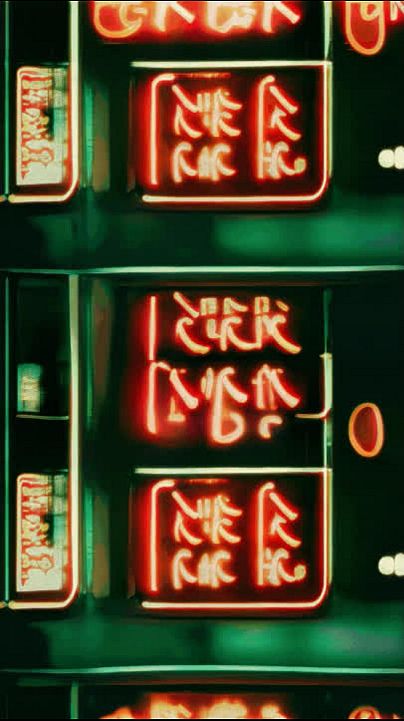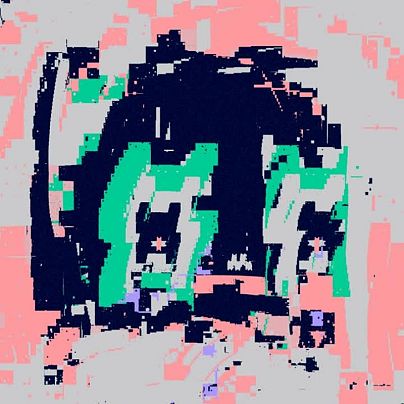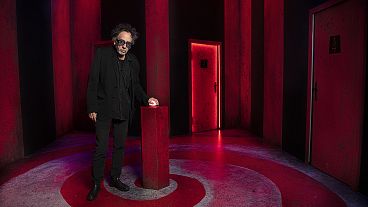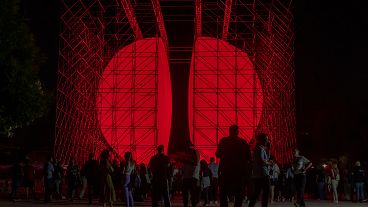London's HOFA gallery is hosting a new show that puts digital artworks in the spotlight, bridging the gap between the crypto and art worlds.
A day before the opening of the “Beyond the Screen” exhibition at the House of Fine Art gallery in London, one of the titular screens was on the fritz.
“We are facing, as we expect all the time, technical issues,” said HOFA’s Communications Director Emma-Louise O’Neill, as she gave me a virtual tour of the space. “It doesn’t matter how good we are and how well we’ve planned, you can’t account for tech at the end of the day.”
This is one of the risks of putting on a digital art exhibition. Unlike physical art, which generally stays in one place once it’s set down, digital art relies on screens, projectors, electricity and sometimes even Wifi to function. (The malfunctioning projector was eventually fixed.)
The team at HOFA had spent a week on the installation of their latest exhibition, which showcases nine works by established and emerging digital artists that are valued at $5 million (€4.5 million).
From Artificial Intelligence (AI) and generative art to immersive displays and digital paintings, the pieces were displayed on screens and projected onto walls in HOFA's 500 square-metre gallery in London’s upscale Mayfair neighbourhood.
HOFA is not a newcomer to new media. An early champion of digital art, the gallery has been representing digital artists for years. In 2018, HOFA even became the first gallery in the world to accept payment in cryptocurrency for its collection.
“Starting to accept cryptocurrency was a first dip into this whole universe that is Web3,” HOFA founder Elio D’Anna told Euronews Culture. “It allowed us to start developing tech, allowed us to start getting the artists interested in working in this different layer.”
The crypto world and the art world have something of a love-hate relationship, and HOFA has one foot in both of them. In 2022 D’Anna helped launch the ARTEM coin, the first cryptocurrency token created for the art world and luxury market.
But he says that today, there’s a certain distance that needs to be kept to avoid being associated with some of the negative connotations of crypto – particularly when it comes to NFTs.
How NFT became a dirty word in the art world
“The word NFT is very polluted, that's the biggest problem,” D’Anna says. “It's been used and I would say abused to an extent that it’s now found a lot of rejection.”
For their promotion of the show, HOFA avoided using the term too prominently, D’Anna explains.
NFTs – which have emerged as the preferred way to authenticate digital artworks, by recording their ownership on the blockchain – have been criticised for encouraging mass speculation and reducing art to mere collectibles.
But they’ve also created opportunities for a lot of artists, allowing them to make a living and take ownership of their work, since almost anyone can mint, or create, an NFT.
Many of the artists featured at “Beyond the Screen” rose to fame in NFT circles, including headliner XCOPY – one of the “OG” NFT artists – as well as co-curator of the exhibition Ovie Faruq.
Faruq, whose artist name is OSF, was a high yield credit and derivatives trader at Barclays and an NFT collector before he decided to mint his own works, reviving a childhood passion for art.
“I don’t think I ever really valued myself as a good artist or thought I would be successful or anything like that, I just did it because I wanted to do it,” Faruq told Euronews Culture.
His style struck a chord with the NFT crowd, and Faruq saw the value of his works skyrocket. He recently became the highest-selling lot at Sotheby’s Digital auction for his work “Carnaby Street”.
Rife with references to Internet culture (Pepe the Frog makes regular appearances), Faruq’s works are chicken-scratched flashing snapshots of the banality of everyday urban life, the drinking, the gambling, the excessive screen time.
He said his goal as co-curator of “Beyond the Screens” is to bring together the crypto world and the art world.
“I do think there’s a big disconnect between the NFT world and the traditional art world,” Faruq said. “I’m quite passionate about making those inroads because I do think there are people with genuine intentions and that some bad actors shine a bad light on an industry that I think is actually very creative and very exciting.”
Humans working alongside machines
While some digital artists like Faruq use technology as a tool to create new artworks, others like Ivona Tau use technology to interpret works they’ve already made, creating new pieces in the process.
Tau is a Lithuanian AI artist who works with generative neural networks to create motion paintings based on thousands of her own original photographs. She holds a PhD in Artificial Intelligence, and says her science and artistic practices are two sides of the same coin.
“My motivation was really to explore the world,” Tau told Euronews Culture. “I was exploring that with photography by capturing the environments I was in. But I was also exploring that with mathematics, by learning computer science, by learning how computers work, learning how to create programs that would also capture the complex nature of all the things that surround us.”
The work she’s exhibiting at “Beyond the Screen” is called “Red Lights in Hongdae,” an abstract moving painting that ebbs and flows across images of the streets of Seoul that Tau photographed during her travels.
She says she used different models to bring out different features of the photographs – one is trained to recognise the patterns of neon letters, another is trained on nature photography to bring out some of the colours in the photos.
“The animations are very different from the original photographs,” she says. “It’s a process where I understand and recognise the elements, but I also like to use those models as very sophisticated paintbrushes in a way, and mix and match them in a very unexpected way to really explore and play and see what happens.”
Tau says she’s not worried that AI will replace artists anytime soon, because people will always be interested in this human aspect of art.
“There is no AI art without a human behind it, without the story they’re trying to tell,” she says. “AI on its own cannot say what it wants to create, it needs a human who is able to pinpoint that. And I believe this is essentially what creates art.”
Growing investment in the digital art market
The global market for digital art is projected to reach $8.5 billion (€7.7 billion) this year with the AI art market said to top $1.8 billion (€1.6 billion) by 2026.
HOFA has seen a 200 percent increase in new AI and digital art collectors since 2021. Some of those collectors are new to the art world, young investors who have crossed over from NFT circles.
“We have certainly onboarded a lot of young digital collectors that we’re collecting from the early NFT era,” D’Anna said. “Then they kind of grew, their taste evolved and we could get them to understand more about contemporary art.”
Others come from a traditional art background and are curious about adding some digital pieces to their collection.
There are multiple appeals to digital art for collectors: it’s easy to buy and sell, there’s no limit to how many pieces you can buy (physical art collectors often run into storage issues) and it can be displayed anywhere – from a TV screen to a laptop to a smartwatch.
Maximilian Stahl, CEO of VHV Reasürans and third-generation art collector, started adding digital art to his collection a few years ago.
“The nice thing about digital art is you don’t need to increase your space to show more artworks, because depending on what you buy, you can use the same screens,” he told Euronews Culture.
But despite the adaptability of digital works, Stahl says his process for choosing a piece to add to his collection is the same. He’s looking for something that moves him.
“It’s like with any art, that first moment needs to be special, it needs to grab my attention, I need to stand in front of it and say ‘Wow, I’ve never seen something like this before,’” he said. “Once I’m emotionally touched, I’d like to learn more about it. From a cognitive point of view, like how was it generated? What data was inserted? What was the process of creating it? That can play a role as well.”
At “Beyond the Screen” Stahl says he’s most excited to see XCOPY’s work because of its commentary on technology, dystopia and death.
“Beyond the Screen” is open to the public from 5-26 May at London’s HOFA gallery. To learn more, watch our video in the player above.
